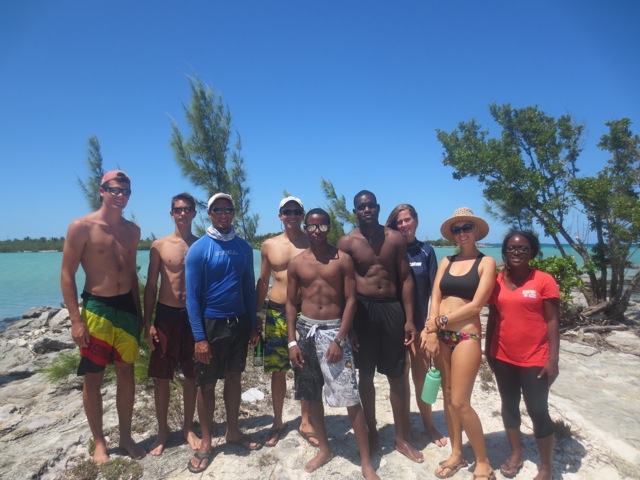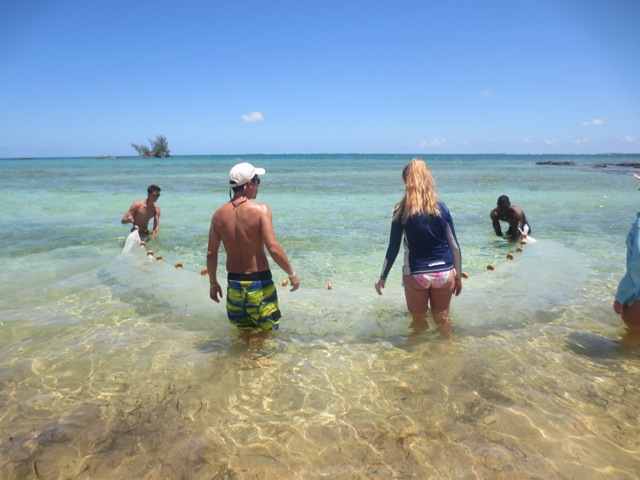 Last week Justin Lewis, from Grand Bahama, Zack Jud, from Florida International University and Tiffany Gray, from Cape Eleuthera Institute, worked with Cassandra Abraham at Friends of the Environment in Marsh Harbour, Abaco on a flats program with local students from Abaco. This flats program was like a shorter version, just 3 days, of our 7 day sleep over Flats Week summer program at Cape Eleuthera Institute. It gives students a chance to not only learn the basics of flyfishing, but also immerse themselves into the ecology and conservation of the flats ecosystem. We had 5 students, all Bahamians, participating in the course.
Last week Justin Lewis, from Grand Bahama, Zack Jud, from Florida International University and Tiffany Gray, from Cape Eleuthera Institute, worked with Cassandra Abraham at Friends of the Environment in Marsh Harbour, Abaco on a flats program with local students from Abaco. This flats program was like a shorter version, just 3 days, of our 7 day sleep over Flats Week summer program at Cape Eleuthera Institute. It gives students a chance to not only learn the basics of flyfishing, but also immerse themselves into the ecology and conservation of the flats ecosystem. We had 5 students, all Bahamians, participating in the course.
 The program started out on Tuesday, August 13th, with an informational presentation on bonefish and flats ecology. Zach and Justin also spent a bit of time that first day teaching students the basics on flyfishing where they had the chance to practice casting, some of them for the first time! That afternoon we headed over to Great Cistern to do an introduction on methodology and how to use the seine net. We saw lots of turtles, a shark and caught some shad (mojarra), crabs, shrimp, and other fun stuff in the seine net.
The program started out on Tuesday, August 13th, with an informational presentation on bonefish and flats ecology. Zach and Justin also spent a bit of time that first day teaching students the basics on flyfishing where they had the chance to practice casting, some of them for the first time! That afternoon we headed over to Great Cistern to do an introduction on methodology and how to use the seine net. We saw lots of turtles, a shark and caught some shad (mojarra), crabs, shrimp, and other fun stuff in the seine net.
The second day we tagged 20 bonefish around Crossing Rocks, about 12 miles south of the Marls. Clint Kemp from Black Fly Lodge in Schooner Bay took us out with two of their flats boats for a Continue reading

